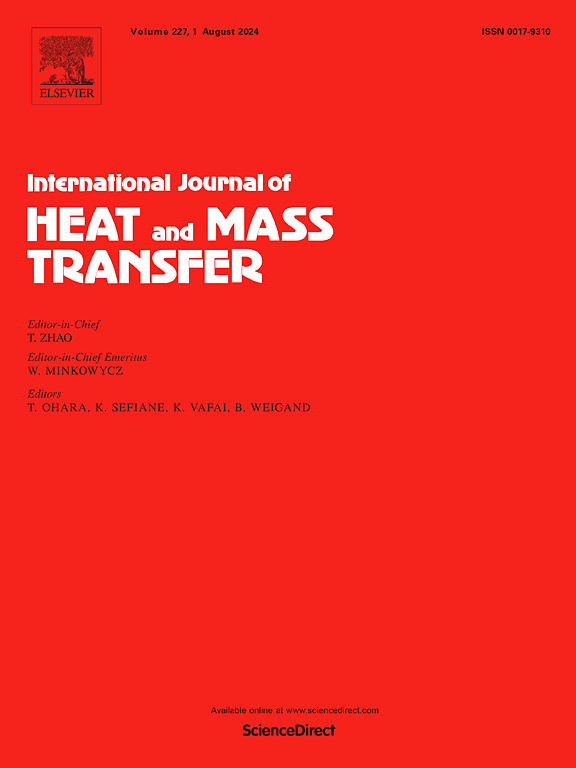超临界通道流动亚网格尺度热物性评估与数据驱动建模
IF 5.8
2区 工程技术
Q1 ENGINEERING, MECHANICAL
International Journal of Heat and Mass Transfer
Pub Date : 2025-05-09
DOI:10.1016/j.ijheatmasstransfer.2025.127184
引用次数: 0
摘要
超临界压力下壁面湍流和换热的大涡模拟的难点在于热物理性质的高度非线性变化。为低压理想气体流动而开发的LES方法在SCP流体流动中的适用性仍然不确定。为了解决这个问题,对SCP湍流通道流动的LES框架和假设进行了仔细评估,同时进行了全面的先验分析和数据驱动的建模。以CO2为工质,上下壁温差不同,进行直接数值模拟(DNS)。通过相对误差和数量级分析,对不同滤波宽度下的DNS结果进行了子网格尺度(SGS)项的先验评估。研究结果强调了SGS在SCP下的热物理性质的重要性,过滤密度高达25%,过滤动态粘度为35%,过滤热扩散系数为90%,这导致了额外的未解决的对流和扩散通量。通过Pearson和Spearman相关分析严格选择输入参数,开发了前馈神经网络来预测SGS性质。取得了良好的性能,所有SGS特性的平均相对误差为10%,显示了它们在SCP CO2壁界流动中的应用前景。本文章由计算机程序翻译,如有差异,请以英文原文为准。
Assessment and data-driven modeling of subgrid-scale thermophysical properties in supercritical channel flows
Challenges in large eddy simulation (LES) of wall-bounded turbulent flow and heat transfer at supercritical pressure (SCP) arise from highly nonlinear variations of thermophysical properties. The applicability of LES methodology developed for low-pressure, ideal-gas flows to SCP fluid flows remains uncertain. To address this, the LES framework and assumptions for turbulent channel flows at SCP are carefully evaluated, accompanied by a comprehensive a priori analysis and data-driven modeling. Direct numerical simulations (DNS) are conducted using CO2 as the working fluid, with different temperature differences between the upper and lower walls. An a priori assessment of subgrid-scale (SGS) terms is performed against the DNS results at different filter widths, through relative error and order-of-magnitude analyses. The findings underscore the importance of SGS thermophysical properties at SCP, with up to 25 % in filtered density, 35 % in filtered dynamic viscosity, and 90 % in filtered thermal diffusivity, giving rise to additional unresolved convective and diffusive fluxes. The feedforward neural networks, with input parameters rigorously selected via Pearson and Spearman correlation analyses, are developed to predict SGS properties. Good performance is achieved, with mean relative errors <10 % for all SGS properties, showing their promising application in SCP CO2 wall-bounded flows.
求助全文
通过发布文献求助,成功后即可免费获取论文全文。
去求助
来源期刊
CiteScore
10.30
自引率
13.50%
发文量
1319
审稿时长
41 days
期刊介绍:
International Journal of Heat and Mass Transfer is the vehicle for the exchange of basic ideas in heat and mass transfer between research workers and engineers throughout the world. It focuses on both analytical and experimental research, with an emphasis on contributions which increase the basic understanding of transfer processes and their application to engineering problems.
Topics include:
-New methods of measuring and/or correlating transport-property data
-Energy engineering
-Environmental applications of heat and/or mass transfer

 求助内容:
求助内容: 应助结果提醒方式:
应助结果提醒方式:


